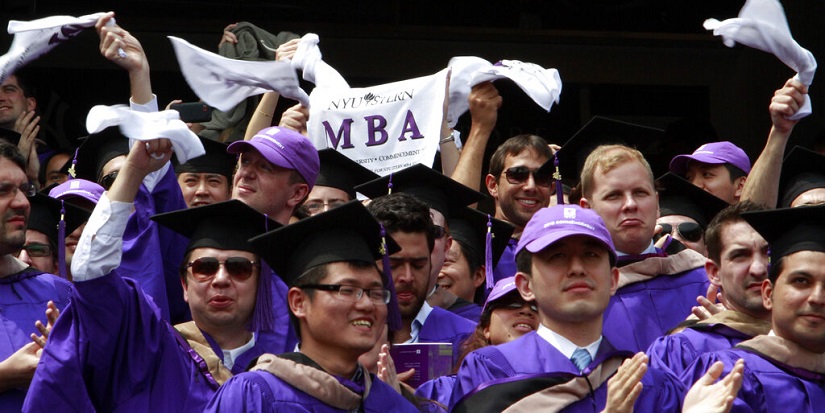
Bring Back the MBA
-
 Jared Dillian
Jared Dillian
- |
- September 22, 2022
- |
- Comments
I got my MBA from the University of San Francisco in 2001 and used the degree to secure a job in capital markets at Lehman Brothers. That was a banner year for MBAs. My incoming associate class at Lehman that year had 300 MBAs across the firm in sales and trading, investment banking, and private wealth management. We all had a lunch at Windows on the World in the World Trade Center. Lehman’s second-in-command, Joe Gregory, was the speaker. In one of his more likeable moments, he shouted into the microphone, “You’re the last ones in!” That got a nervous laugh out of the crowd of MBAs. We knew the cycle had turned, Lehman had over-hired, and would be cutting soon. To its credit, Lehman waited at least a year before trimming the headcount, but after 2–3 years, many of those people were gone. There were 12 MBAs from my class in equities. Seven years later, at the bankruptcy, I was the only one left.
An MBA was a useful degree for a career-changer, someone who got to about age 27 and decided that he or she had taken a wrong turn. That was true of me—I was coming from the Coast Guard. Investment banks, almost without exception, do not hire MBAs these days, at least in sales and trading. They hire analysts, kids out of college. They are cheaper and tend to stay with the firm longer, while the MBAs had a tendency to be mercenaries and move to other firms. I’m not happy about this turn of events—it has become very hard for a career-changer to get a job on Wall Street. Unless you come tumbling out of the womb knowing that you’re going to be an investment banker, you’re not going to be an investment banker.
|
[Monthly Subscriptions Now Available] Start building real wealth now with Jared Dillian’s Strategic Portfolio. This “done for you” investment portfolio is ready to go—you could be invested as early as tomorrow. Take the stress out of investing—find out more by clicking here. |
These days, MSF (Masters of Science in Finance) and MSFE (Masters of Science in Financial Engineering) programs are all the rage. They’re not at all like an MBA. In an MBA program, you’re getting exposed to marketing, operations, entrepreneurship, decision theory—you’re a mile wide and an inch deep. MSF and MSFE graduates are quants—they learn lots of math about option pricing and how to program in Python. An MBA can do all sorts of different things, like working in venture capital or health care; an MSF can basically only work at a bank or hedge fund. Banks had a choice between hiring well-rounded people and people who are specialists, and they went with the specialists. And the popularity of the CFA program has created an environment where the financial industry is full of people who are really good at finance, but not much else.
I am a happy holder of the MBA degree. You probably noticed in the first paragraph that I went to a non-target school, but the education I received at USF was exceptional. When I got to Lehman Brothers, I found that I had a much better academic background than most of my contemporaries. I took school seriously. I learned as much as I possibly could, and I learned a lot outside the curriculum, too. And I still believe that an MBA gives young people a lot of intangibles that they wouldn’t get in a series of math classes, and those intangibles are worth something. I have met students in a couple of MSF programs, and I will tell you that they are not very well-rounded.
And you do want well-rounded people working at a bank. You can’t take MSFs to go pitch banking business. You can’t take MSFs to hedge fund idea dinners. What MSFs can do is program trading algorithms, something that comes in handy at quantitative trading shops, which happen to be the most profitable businesses in finance at the moment. But the business of banking is a people business, built on relationships. MBAs will work in a leadership position someday. MSFs are strictly employees. Still, the demand for MBAs is at an all-time low. Except in consulting, where 27% of Wharton MBAs go, according to Wharton MBA career reports.
There is something known as the Harvard MBA Indicator, which tracks what industries Harvard Business School graduates go into. The lore is that when 30% or more of an HBS class goes into a particular industry, that industry is ripe for a bear market, and when less than 10% of an HBS class goes into an industry, that area shows promise. Private equity is pretty popular these days, but only 11% of Harvard Business School students are going into private equity. The interesting thing about the Harvard MBA Indicator is that the students that don’t work in tech, or PE, or banking, or consulting and start their own business tend to be the most financially well off. That’s where the MBA comes in—an MSF won’t prepare you for being an entrepreneur.
I’d like to bring the MBA back, but not until people stop putting “MBA” after their names. You can’t do that, it’s not a terminal degree. It’s a class marker in the business world. If you ever get a LinkedIn request from someone with MBA after their name, decline it.

Jared Dillian
subscribers@mauldineconomics.com

 Jared Dillian
Jared Dillian